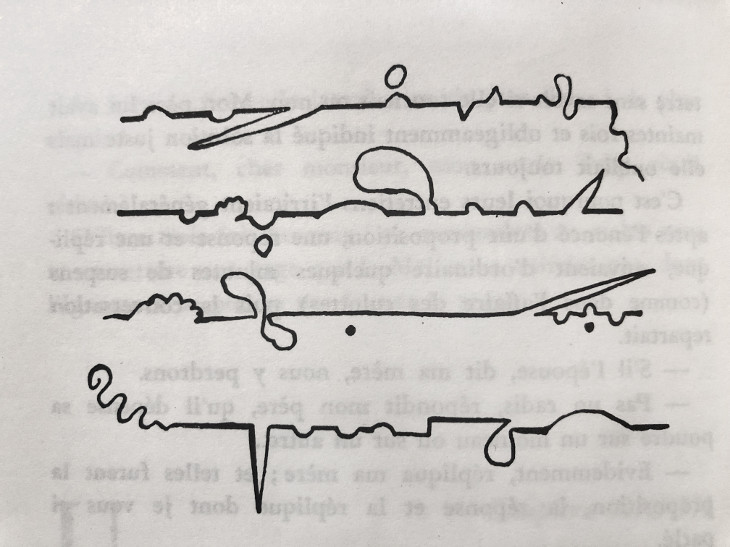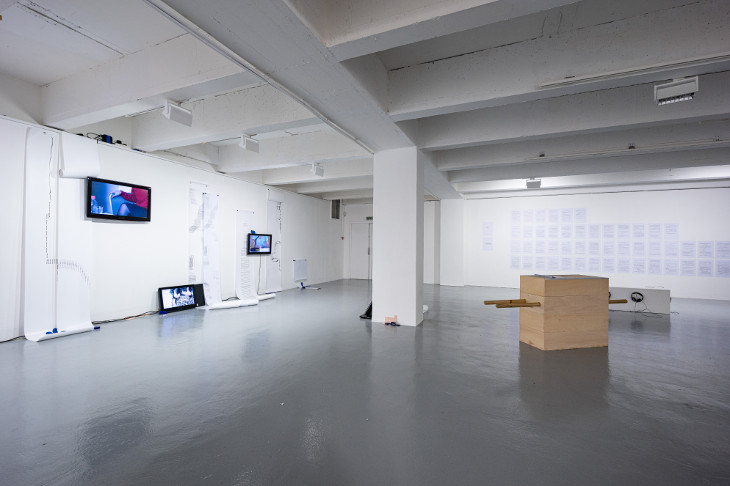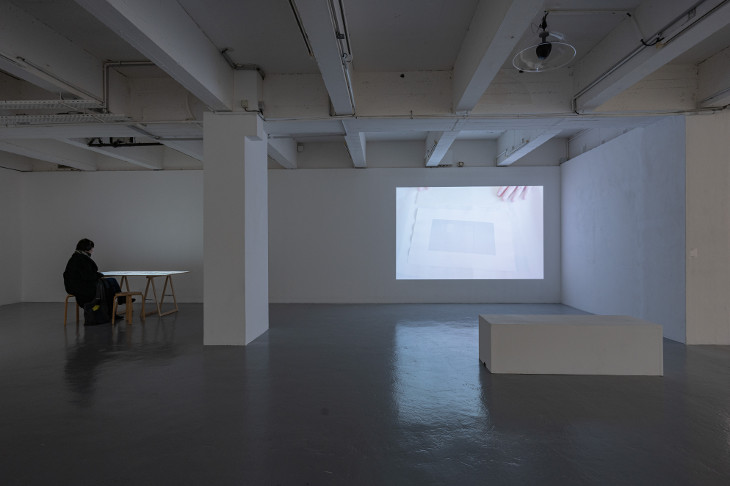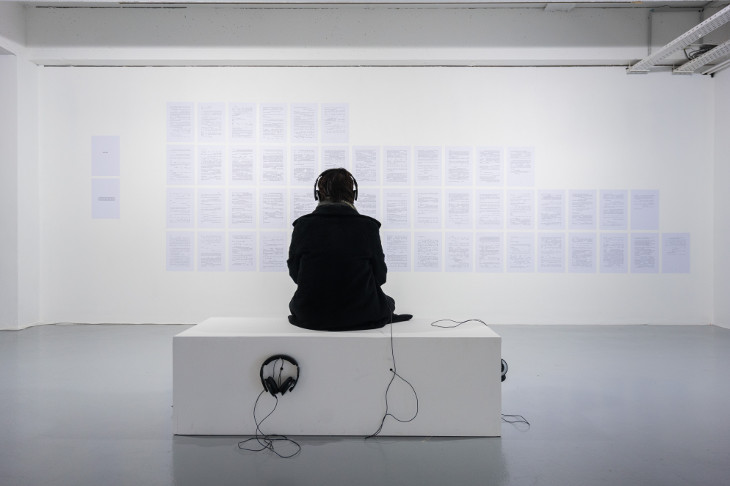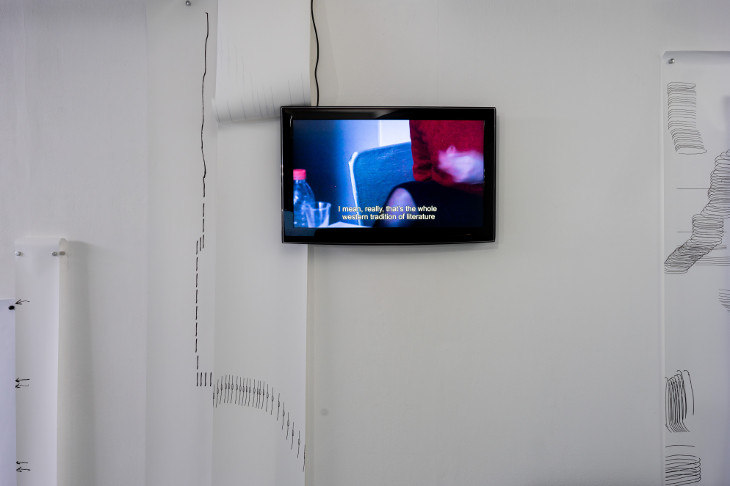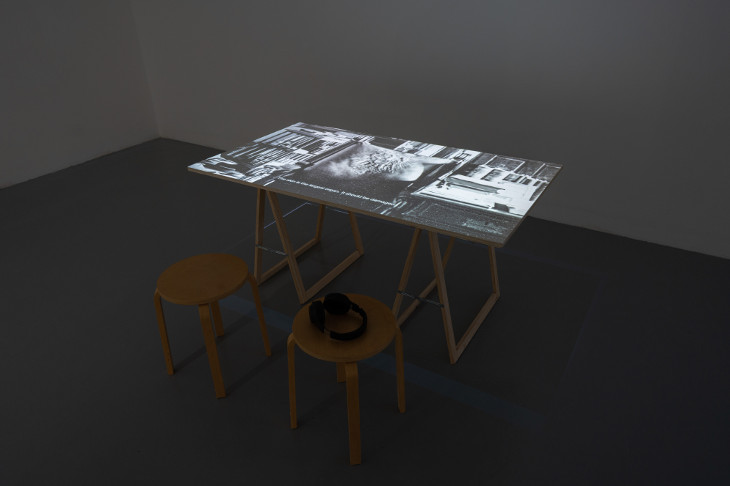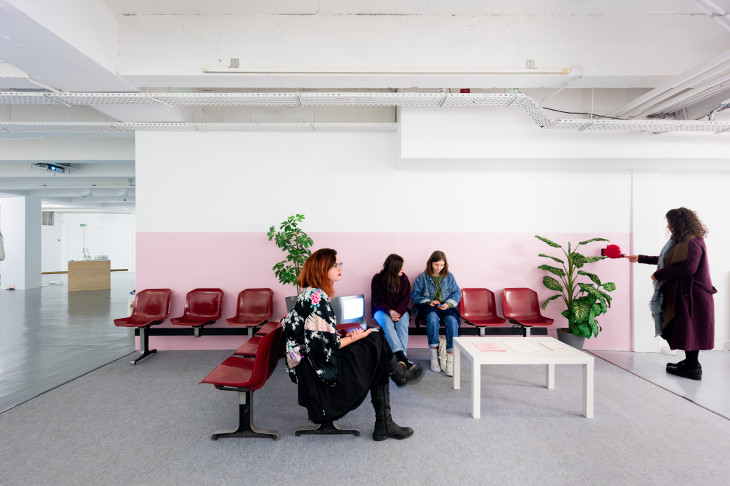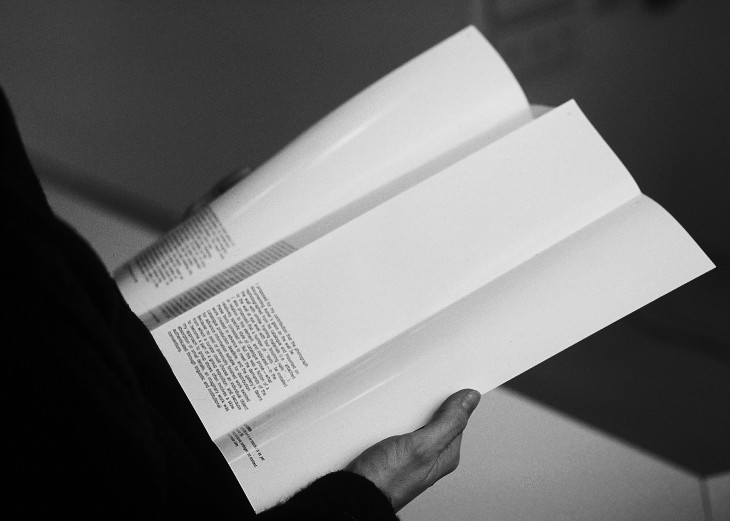The Intolerable Straight Line
Exhibition at Galerie Art & Essai, Université Rennes 2
November 15, 2019 – January 16, 2020
Galerie Art & Essai, université Rennes 2 Place du Recteur Henri Le Moal 35000 Rennes
Opening Thursday 14th November, 6 P.M. – 9 P.M., following a conference with the exhibition’s artists at 4 P.M. in room B019.
Monday 18th and Tuesday 19th November: performances and discussions at the Galerie Art & Essai and on the university campus (10 A.M. – 12 P.M./1 P.M. – 6 P.M.) and projection of a selection of films by Silvia Kolbowski at 6:15 P.M., room E2.
An exhibition presented as part of the research and exhibition programme Art by Translation, featuring new work by Silvia Kolbowski, Julia E. Dyck, Maíra Dietrich, Falk Messerschmidt and Pedro Zylbersztajn.
Performances by Julia E. Dyck, Pedro Zylbersztajn and the moilesautresarts collective.
Reactivation of the ‘i.e.’ project by the students of the visual arts master’s programme at Université Rennes 2, the ESAD TALM Angers and l’ENSA Paris-Cergy.
Research and curatorial team: Maud Jacquin and Sébastien Pluot, Yann Sérandour and Anne Zeitz (PTAC team, Université Rennes 2)
Supported by the Ministère de la Culture et de la Communication, ESAD TALM Angers, ENSA Paris-Cergy, and the Pratiques et théories de l’art contemporain group (PTAC EA 7472)
From the moment it is separated from its author, any text or object necessarily confronts contexts of varying predictability that transform its meaning. Far from being autonomous, works shift and change according to their environments and trajectories; they disappear and reappear, and depend on the care that they receive and the value systems that they enter into. A number of artists conceptualize projects which explicitly seek to take into account the future evolutions, receptions and hence the translations of their works across different temporal contexts. This exhibition stems from an exploration of the questions and implications of an evolving work by Silvia Kolbowski that has been successively entitled Enlarged from the Catalogue: Michael Asher (1990) and Missing Asher (2017), and which now returns in a new iteration at the Galerie Art & Essai.
Kolbowski’s work cites another piece that was created by American conceptual artist Michael Asher in 1973 at the 167 Gallery of the University of California at Irvine as part of a group exhibition that involved both faculty and students. Recognized as one of the instigators of “institutional critique”, Asher devised a piece that consisted of a glass plate whose dimensions corresponded to the average size of the works shown in the exhibition, nailed to the wall. It raised questions around conventions of exhibition, reflecting the context of the white cube and revealing the granularity of the supposedly neutral white paint on the walls. Silvia Kolbowski’s 1990 work Enlarged from the Catalogue meanwhile consists of a photographic image drawn from Asher’s documentation of his artwork as it appeared in the catalogue Michael Asher, Writings 1973-1983 on Works 1969-1979, scaled up to the size of the original plate, and framed. In 2017, Kolbowski created a film which retraced the trajectory of her 1990 work over the three decades following its creation, examining the cultural, political and economic conditions of the contexts through which it had passed. Her film explores the conventions of display in different eras, the changing status of the author and its relation to American notions of individualism, the attribution of value to and conservation of conceptual works, and the ways in which the archive can generate new forms.
This exhibition was conceived collectively over the course of a seminar led by Art by Translation, researchers from the PTAC group at University Rennes 2, and invited guests such as art historian Sven Lütticken. This seminar offered an opportunity to examine a certain number of issues linked to the notion of the ‘trajectory’ as it is present in Kolbowski’s work: the dissemination of work through publications and critical discourse; practices which cite or reference projects by other artists; the entropic transformations of works of art; the influence of conservation politics and techniques on the trajectory of works; and the dynamics of translation that are inherent in the processes of historicization.
In response to these questions, the four artists participating in the Art by Translation programme have conceived new works that are presented in the exhibition.
Julia E. Dyck (Canada) transposes the principles of a John Cage score to the archives of an independent feminist radio show in Montreal. For her piece, she transcribed interviews with artists who had been invited as guests on the show, including their silences, sighs, and hesitations, transforming them into new scores open to performative interpretation. Through this operation, Dyck interrogates the mechanisms through which artworks are legitimized and the ways in which these processes can render invisible certain non-conventional practices, in particular those of women artists or collectives. Her work also reveals the extent to which the written transcription of spoken language engenders various gains and losses.
In her video installation, Maíra Dietrich (Brazil) performs the words and gestures of a series of artists, writers and public figures who have influence her, including filmmaker Chantal Akerman, writer Chris Kraus, and Brazilian activist Ailton Krenak. Through re-enacting the words of others, she approaches citation through embodied gestures that are at once an appropriation and an homage, reaffirming the importance of these words in the contemporary era.
A film by Falk Messerschmidt (Germany) features photographic documents relating to Germany’s colonial history drawn from the archives of the Leibniz Institut für Länderkunde (the Liebniz Institute for Regional Geography). Messerschmidt explores the way in which we view these images today, their trajectory across different eras, and the transformations that they have been subjected to by different techniques of reproduction. The physical manipulation of the archives meanwhile enables him to interrogate his own position in relation to these documents.
Through an installation that recreates a waiting room in which visitors are invited to take a seat and interact with a range of texts and images that call for various processes of reading, interpretation, and translation, Pedro Zylbersztajn (Brazil) transforms the experience of waiting into a suspended moment in which a multiplicity of trajectories seem possible and open. In a performance conducted using Whatsapp, several participants perform a melody, whistling the same tune at different points across the campus. Variations of a single theme build up throughout the performance, creating mismatches and dissonant effects that challenge the very possibility of the notion of simultaneity.
Students from the visual arts master’s programme of Université Rennes 2, from the ESAD TALM and from ENSA Paris-Cergy, and members of the moilesautresarts collective together propose an extension of the ‘i.e.’ project begun in 2017 by artist Mark Geffriaud. They have created works that are installed in two mobile boxes but which are destined to be disseminated beyond the space of the gallery in order to encounter new contexts and translations.
The works presented in this exhibition together trace out uncertain and complex trajectories that recall the drawings with which the eponymous hero of Laurence Stern’s novel The Life and Opinions of Tristram Shandy represents the winding narrative lines of his own story. The expression “the intolerable straight line” is borrowed from Stern’s 18th century novel and is a means of pointing to the ways in which the numerous translations to which the works in this exhibition are subject lead them to inevitably deviate from linear trajectories.
